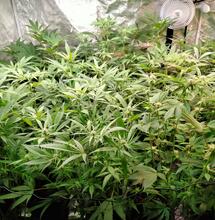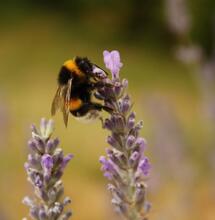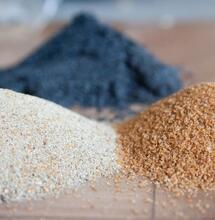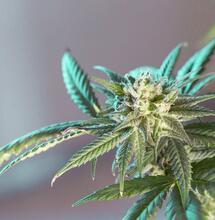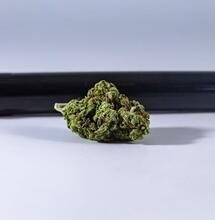A Handy Guide for Nutrients and Your Strains - Tips for 10 Different Strains

Every once in a while one needs to freshen up their knowledge with how to administer nutrients to cannabis plants efficiently.
It’s written in every growers’ bible: Nitrogen (N), Phosphorus (P), and Potassium (K) are the three most essential nutrients the cannabis plant needs to flourish and thrive. When do you add each, and does the nutrient scheme changes depending on the cannabis strain you grow?
Nitrogen specifically helps the cannabis plant give its lush, thick leaves during the growing stage, which over time will naturally want to darken to facilitate photosynthesis further on. It’s an important nutrient during each step, including flowering. Phosphorus is also vital for photosynthesis, but also for the cannabis plant’s metabolism and general nutrient uptake.
It has an essential role in the early development of the root, so it’s particularly important for new growth. Another of its primary functions is to support bud formation and yield. Potassium on the other hand strengthens the plant tissue and increases its ability to resist pests, infections, diseases, and also cold and frost.
In photosynthesis, it specifically supports carbohydrate processing. It further increases bud size and density and improves the efficiency of the cannabis plant on how it uses water. In addition to these basic three nutrients, there's an array of other micro and macronutrients that benefit the cannabis plant. Below are some critical tips on the nourishing work you should do depending on the cannabis strains you might be growing.
Cannabis Plant Nutrients: Tips for 10 Cannabis Strains
Grandaddy Purple plants
Your sleep-inducing yet euphoric Grandaddy Purple plants need high amounts of Nitrogen during vegetation, after which you switch to higher phosphorus solutions when in flowering time. Aside from that, your Grandaddy Purple could use additional nutrients like copper, iron, sulfur, boron, calcium, magnesium, and manganese.
It’s best to grow it indoors in organic soils, avoiding synthetic fertilizers that can spoil the soil with excess salt. Salt may impact GDP plants negatively, messing with their ability of nutrient absorption. Therefore, it’s safest to go with a pre-mixed bag of organic ‘super soil,’ which should already have everything your GDP plants need. Once you've made sure the GDP soil quality is top-notch, the next step is ensuring you have the right nutrients ready at hand.
Pick from nitrogen-rich solutions such as bat guano or worm castings, which the strain will greatly benefit during vegetation. When the time comes for more phosphorus-rich solutions, switch to rock dust, chicken manure, and bone meal. Kelp and compost should additionally improve the soil’s potassium content.
G13 plants
This potent indica seems to be always hungry for nutrients. It’s one of the rare strains that can process so many nutrients without overfeeding it. So you should be pretty safe from one of the most common mistakes among novice and even experienced growers - overfeeding. With G13, be generous with nitrogen when in the vegetation stage but reduce significantly when in flowering time.
You also want to use pre-mixed soils that would contain secondary nutrients like calcium, magnesium, zinc, iron, and copper. If you fear that you’ve still overdone feeding your G13 plants, you’ll know by the intense green leaves going yellow with bending leaf tips. This is one of the first symptoms the plant will give.
Then will follow discoloration of the stalks and branches, usually giving red-purple nuances. If you face this issue, remove the affected parts from your G13 plants and flush the soil with pH balanced water. When you resume feeding, use half the dose you previously used.
Blueberry plants
With moderate to high yield, Blueberry is best to grow outdoors and where you have sufficient hours of sunshine. Prepare the soils for your Blueberries before starting to grow. You can begin growing inside and then bring the plants outside as they will significantly benefit from natural sunlight. Prepare a nitrogen-rich soil, using more nitrogen than what you would use for most other strains.
Once the Blueberry plants are outside, they will need as many nutrients as possible to form and strengthen their constitution. When it enters the flowering stage, apply worm castings on the top of the soil, and maximize the soil's richness with other solutions such as bat guano. Worm castings are an exceptional nutrient-rich waste product, naturally aerated and processed by the worm’s digestive system.
Bat guano is naturally high in phosphates and nitrogen due to the extra nutrients consumed by the bat, and it also acts as a natural fungicide. When the two stir on the soil, it may result in a strong odor in your outdoor garden, but worry not, this will not affect the smell and taste of your Blueberry buds.
Northern Lights
Despite you should “shower” Northern Lights with light, second that for nitrogen, especially when the strain is in the vegetative phase. When flowering, double on the other two building blocks, potassium, and phosphorus. Northern Lights will benefit from higher amounts of Nitrogen, and unlike other cannabis strains, it’s less likely to experience nitrogen burn.
However, it pays to be cautious with store-bought potting mixes, especially when your Northern Lights plants are in their early days. It may be a resilient strain, but it takes some time before the plant builds strength and immunity. An excess of nutrients might still cause the plant issues with the roots and strange discoloration that range from yellow to black.
So, add nutrients little by little in the beginning and see how your NL plants react to it. If you use readily available mixes, these should have all the other nutrients NLs plants demand: sulfur, magnesium, copper, calcium, manganese, zinc, iron, and boron. As those are secondary nutrients, most of the time all you need is trace amounts of them. Most commercial mixes contain low amounts of these elements.
Hindu Kush plants
The Hindu Kush best thrives in hydroponics settings, so here's a tip for using that medium. You must pack the hydroponics setting with sufficient nutrients like Magnesium and Calcium. These two are critical when growing weed in hydroponics, and your Hindu Kush will appreciate it.
When you've set the base with Magnesium and Calcium, ensure that your Hindu Kush plants receive sufficient Nitrogen, which will help strengthen their plant constitution and stimulate growing nice big buds. Complete with fertilizers appropriate for flowering. Any bloom booster fertilizer should do it.
Amnesia Haze plants
Amnesia Haze may require more tending than the usual. Dedicate part of the feeding process to build resilient Amnesia Haze plants. Organic liquid fertilizer solutions such as compost tea should do the trick. So, prepare one for when growing Amnesia Haze plants.
Here's more on how to prepare compost tea. When the concoction is ready, put it in a spray bottle. Apply the compost tea directly to the plant's foliage. Using compost tea as a foliar spray directly to the plant will help the plant's good bacteria fight harmful bacteria. At the same time, the plant will absorb micronutrients from the compost solution through its stomata.
Super Silver Haze plants
For this other type of haze, it's crucial not to overwater and overfeed with nutrients. Super Silver Haze will demand considerable amounts of Nitrogen during the vegetation phase but stay on the safe side by pouring the nutrient gradually, little by little. Always observe how your Super Silver Haze reacts after each administration of nutrients.
If you are using a store-bought nutrient mix, never pour more than half of what it says is the recommended dose. Since it's easier to cause a nutrient burn on Super Silver Haze, it's good to learn the signs so that you can spot any disorders as soon as they happen. Some of the symptoms are typical discoloration, such as leaves turning yellow with bending tips, while branches and stalks turn red and purple.
Leaves may also develop an unusual deep green shade while the tips become vividly yellow. With nutrient burn, the calyx and sugar leaf tips of SSH will also turn yellow, beginning to curl back. If symptoms only concern leaves, then you've probably messed something with the watering. If you notice any oddities like this on your Super Silver Haze, remove the plant's affected parts and help calyxes to their normal position.
Flush out the growing medium with pH balanced water (for soil: between 6.0 and 6.5; for hydroponics: 5.5 and 6.0). Tonic available in your local garden shop can be particularly helpful to help you recover SSH plants. Still, it's always best to avoid nutrient burn.
As a preventive strategy, ensure there's a sufficient amount of time between feeding and watering the SSH plants. Stick with "less is more" principles with nutrients, and check if your plant needs water before adding some by dipping your finger into the soil. If it's moist, wait. If it feels dry to the touch, add some water.
Sour Diesel plants
They say growing Sour Diesel is going to be one of the best decisions you ever make in life. A pretentious mood uplifter, Sour D wants its nutrients sufficient and proper. It will be easier to grow it in soils where the basic N-P-K formula is naturally present, however, Sour D is a hungry beast and will demand extra than what is in the soil mix.
You should add extra nitrogen and extra calcium, but, as always, be careful with the dosages. An excess will result in underdeveloped, uncluttered buds. Since Sour D. is typically abundant with foliage, consider frequent watering. An alternative is to spray the foliage with a mix of compost tea.
Durban Poison
For one of the most treasured pure sativas out there, there’s a unique “spice” to add besides the normal N-K-P combination. And that’s your urine. Yes, you read that right. A lot of Durban Poison growers recommend enriching the soil where you grow it with human urine, especially when the plant is in vegetation.
This doesn’t mean you should directly urinate on your Durban Poison plants. Instead, what you want to do is, prepare a mix of your urine and water in a 1:10 or 1:20 ratio. Diluted urine should help the plant better abrosb the N-K-P essential mix. Don’t forget to increase the dosage of these three basic nutrients as long as you apply diluted urine.
You can also use magnesium sulfate and plant food. Ensure your diet is healthy, however, before you decide to hijack your urine for cultivation efforts. You want to use "healthy" urine without extra salts that might deposit in it when you eat too many unhealthy foods.
Jack Herer
For novice Jack Herer growers, it’s more important to watch out they don’t cause nutrient burn rather than nutrient deficiency. Jack Herer is a specific strain, producing less foliage than usual, therefore it requires less than the normal amounts of Nitrogen in the vegetative stage. Select a fertilizer with a ratio of 3-3-5 when you grow Jack Herer, and see there are Sulfur, Magnesium, and Calcium to the mix. Add little by little and see how your Jack Herer reacts to the nutrients.
Conclusion
Although it’s more common for growers to overfeed their plants, your plants will falter without nutrients or when they're undernourished. Typically, cannabis plants require more Nitrogen when in the vegetative phase and more Phosphorus and Potassium when flowering. However, since there are always exceptions, make a background check of the strain you’re growing so you can optimize your nutrients administering. There isn’t any strain-specific nutrient when growing any strain.
It’s merely a question of whether a particular strain will require fewer or more nutrients. Finally, most nutrients are readily available in fertilizer packages where you can check the ratio of the main building blocks N-P-K. And that is a relief. Still, always be careful when you buy those from the store.
They have instructions on how much of the mix you should use, but this information could be misleading. You usually want to use less than what it says. If need be, increase gradually. And don't forget, always observe how your plants react to the input of any nutrients and water.
Happy growing!
